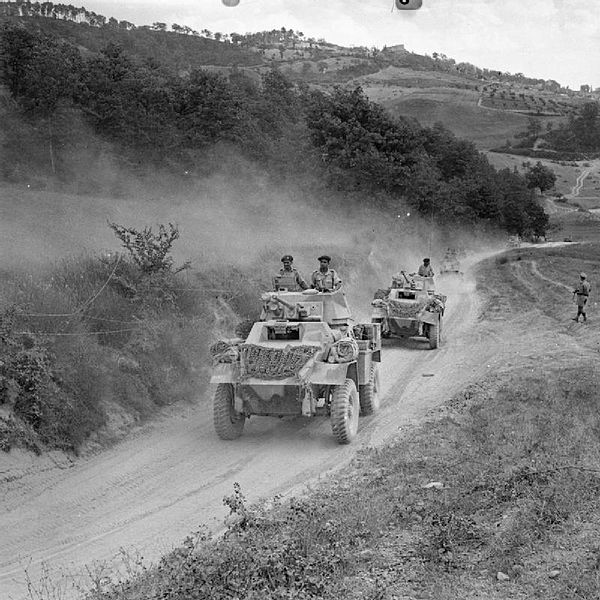10th Indian Infantry Division
The 10th Indian Infantry Division was a war formed infantry division of the Indian Army during World War II. In four years, the division travelled over 4,000 miles (6,400 km) from Tehran to Trieste, fought three small wars, and fought two great campaigns: the Anglo-Iraqi War, the Invasion of Syria–Lebanon, the Anglo-Soviet invasion of Iran, the North African Campaign, and the Italian Campaign.
Clement Attlee meets representatives of the 10th Indian Division, 1945.
The Commander in Chief, General Auchinleck, inspecting Bren gun carrier crews of the Indian Tenth Army in Iraq, 18 April 1942.
The 10th Indian Division in Italy, 22 July 1944.
A patrol from No. 8 Platoon, 'C' Company of the 2nd Battalion, 3rd Gurkha Rifles advances cautiously through the snow, near Castel Bolognese, Italy, 23–24 January 1945.
Indian Army during World War II
The Indian Army during World War II, a British force also referred to as the British Indian Army, began the war, in 1939, numbering just under 200,000 men. By the end of the war, it had become the largest volunteer army in history, rising to over 2.5 million men in August 1945. Serving in divisions of infantry, armour and a fledgling airborne force, they fought on three continents in Africa, Europe and Asia.
New Indian Army recruits
Subedar (VCO Captain) Chawan of 3rd Battalion, 5th Mahratta Infantry, 1943. His battalion had served in North Africa between 1941-1943 before taking part in the invasion of Italy. His unit was involved in the crossing of the Sangro, the advance to Florence, the breaking of the Gothic Line and the engagements at Alpe de Vitigliano and the River Senio.
WAC(I) Naval Wing officers
Central Indian Horse after re-occupation of Benghazi








